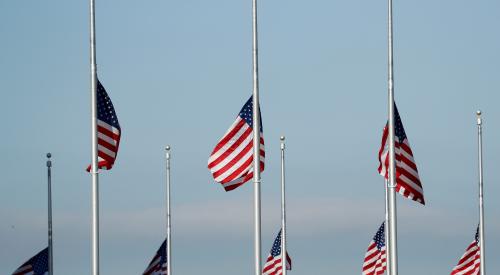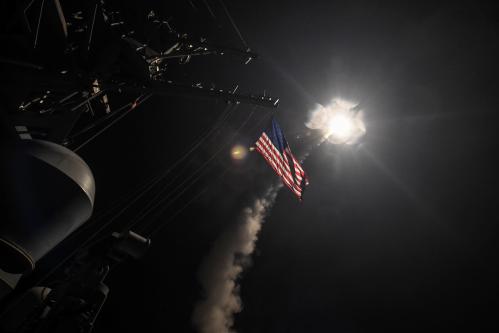On April 23, Alek Minassian, a 25-year-old man from Ontario, drove a rented white van through Yonge Street in Toronto, killing 10 and wounding over a dozen more. Although Canadian authorities have downplayed any link to terrorism, the killings “definitely looked deliberate,” as Toronto Police Chief Mark Saunders noted.
Yet the fact that Minassian appears to lack ties to established terror groups is largely beside the point. Minassian’s attack—and its coverage on social media—nonetheless echoes three of the most distressing trends in global terrorism of late.
1First, Minassian’s attack echoes recent tactics of the global jihadi movement. In 2010, al-Qaida published an article about truck attacks in its online magazine Inspire, and in 2014, the Islamic State spokesman Abu Mohammad al-Adnani followed suit, calling for Islamic State supporters to carry out vehicle attacks in their home countries. Nearly two years ago, one such supporter, Mohamed Lahouaiej Bouhlel, used a 20-ton truck to kill over 80 people in Nice, France on Bastille Day. The extraordinary death toll of the attack, coupled with a wave of global media coverage, quickly led other Islamic State supporters to follow suit. From Berlin to Barcelona to New York City, jihadis throughout Europe and North America began resorting to car and van attacks as a low-cost, low-tech way of producing mass casualties.
The success of the tactic has not gone unnoticed by non-jihadi movements. In Britain, a man with far-right ties rammed his van into a crowd of worshipers outside a mosque last June, while in the United States a far-right protester drove his car through a crowd in Charlottesville, Virginia last summer. Minassian does not appear to have ties to the far-right, but he clearly drew a similar lesson from the recent wave of jihadi vehicle attacks: They can be devastatingly effective. For someone otherwise armed only with a credit card and driver’s license, van attacks can yield extraordinary casualty counts.
2Second, Minassian’s violence appears to owe, at least in part, to yet another toxic online subculture. Facebook has confirmed that Minassian’s final status update, in which he referred to an “incel rebellion,” was authentic. The term is shorthand for “involuntary celibacy” and was coined by a Toronto woman seeking a new category by which to sexually self-identify. Although the broader “incel” subculture was not initially preoccupied with violence, the killing spree by Elliot Rodgers in Isla Vista, California in 2014—which Rodgers carried out after posting a video explaining his incel-related motives—marked a turning point in its history. Indeed, after Rodgers’ attacks, the r/incel subreddit became so toxic that Reddit shut it down last fall, shortly after it had also purged a host of neo-Nazi and alt-right groups. Although Minassian’s full motives still remain unclear, at the bare minimum he has publicly expressed support for Rodgers’ violence and identified with a movement characterized by the vengeful fantasies of men aggrieved by their inability to attract sexual partners. Violent subcultures on the web are no longer the province of jihadis alone.
3Third, the aftermath of the attack also revealed just how pervasive misinformation online can be. Consider the two tweets below, in which Natasha Fatah, a Canadian journalist who quickly arrived at the scene of the attack, reported two eyewitness accounts of the attack. In the first tweet, the eyewitness incorrectly described the attacker as “Middle Eastern” and “angry”:
https://twitter.com/NatashaFatah/status/988486858031222785
Meanwhile, the second tweet, published only a half hour later, accurately described the attacker as “white”:
Another eye witness to the Yonge and Sheppard incident describes van’s driver as white, intentionally hitting people, describing it as a terror attack.
— Natasha Fatah (@NatashaFatah) April 23, 2018
What’s distressing about this is the engagement they received: The incorrect tweet had 10 times the retweets and likes of the correct one. Even worse, it had more engagement after the police publicly revealed Minassian’s identity than the correct tweet had overall.
Minassian’s attack is the worst episode of violence in Canada in three decades. Although Canadian officials have taken pains not to call it a terror attack, to look at it in that frame is to miss the point: Whatever we call Minassian’s violence, we will ultimately need to address the fact that the same kind of tactics and communities the Islamic State exploited have now produced the “incel rebellion” too.






Commentary
Spreading terror: How the Toronto attack echoes recent trends in extremist violence
April 25, 2018